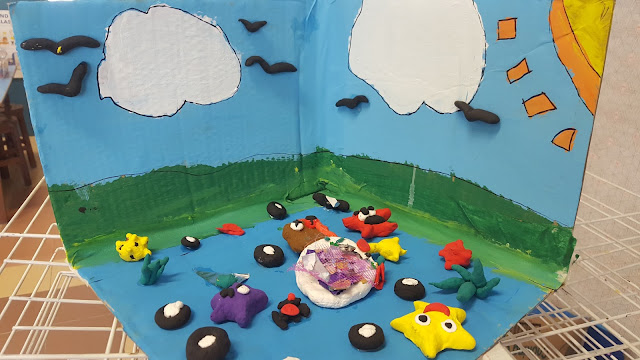The P5 students are making their mark in the art room. You can click on this link to see what I collect all year round as art materials. Students observed the marks made with unconventional everyday materials.
The children studied abstract artists' work such as Piet Mondrian, Wassily Kandinsky and Henri Matisse. We wanted to see how figurative and abstract work play a part in meaning making. And we analysed how the elements of art and principles of design are applicable in their work.
I created a giant worksheet (A3-sized) using acrylic paper, by printing on the back of it. My initial idea was to use life experience to frame the idea of abstract art but decided against it. Using lines, shapes and colours, I use emotion as the backdrop to scaffold their learning.



















































